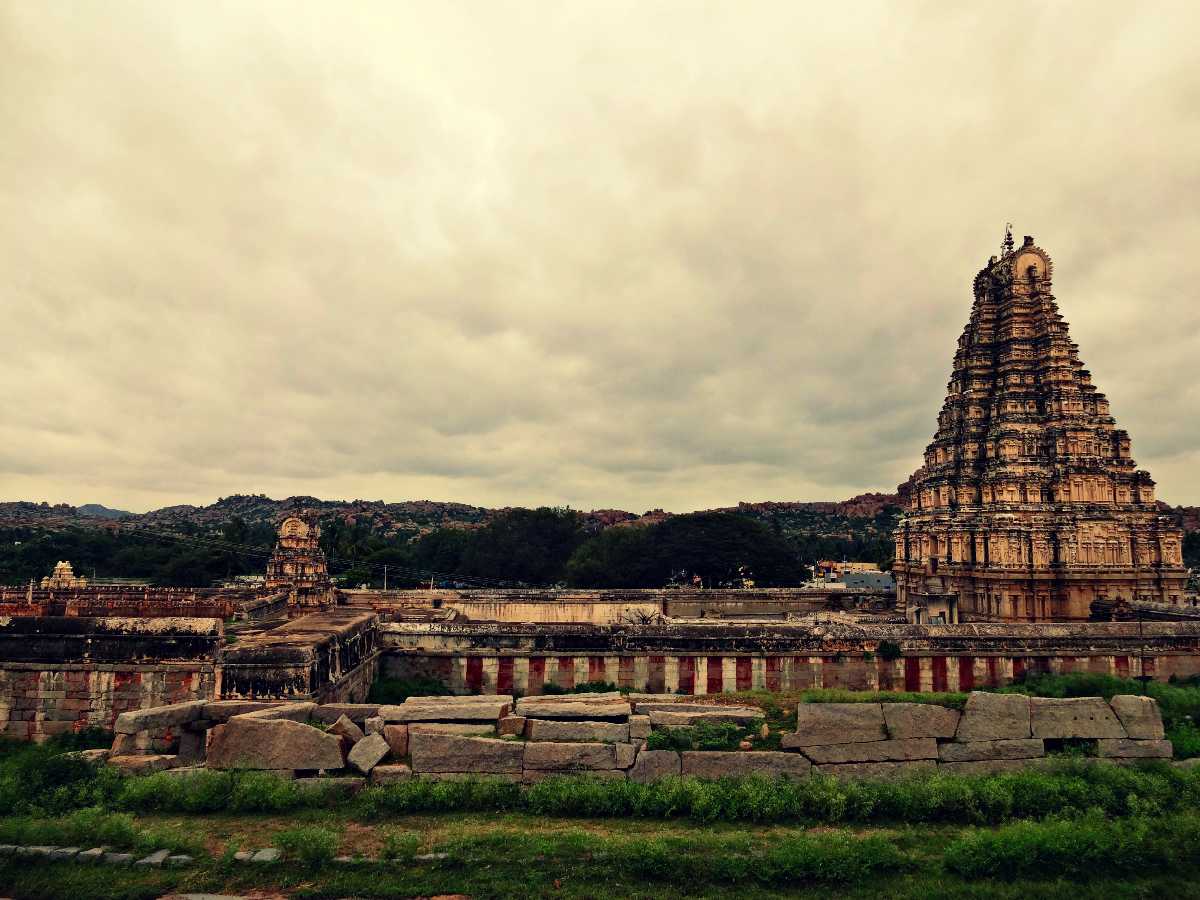
Virupaksha Temple
About Virupaksha Temple
Far From City: 1 kms from city center
Cost:
About Virupaksha Temple
Weather:
Time Required:1-2 hrs
Open Time:9:00 AM - 1:00 PM, 5:00 PM - 9:00 PM
Cost:No entry fee
History and Origin of Virupaksha Temple
Lord Virupaksha for whom the temple is built, is the consort of Goddess Parvathi who is revered as 'Pampa' in the region. Furthermore, the ancient name of Hampi is Pampakshetra and refers to the Thungabadra river which was also called Pampa.
Where Hampi now stands, the capital of the Vijayanagar empire once thrived. However, the Virupaksha temple is said to have originated even before the Vijayanagara empire rose its capital city in the region. A simple structure was built during the Chalukyan and Hoysala periods (9th century A.D.) for Virupaksha, but the temple complex was expanded, and artistic stone works were further added during the rule of the Vijayanagar empire.
The Archaeological Survey of India recognises that the temple was built by the queen of Vikramaditya II, named Lokamahadevi, to commemorate the King's success in a battle over the Pallavas of Kanchi. Hence, many inscriptions also refer to the temple as 'Lokeshwara Mahasila Prasada' in praise of the queen's generosity. What began as a small 'pre-Virupaksha temple', grew bigger with multiple gopurams and pillared halls under the rule of King Deva Raya II. While subsequent invasions of Vijayanagar by empires from the north destroyed most of Vijayanagar empire and Hampi, many parts of the majestic Virupaksha temple were luckily unharmed.
Architecture of Virupaksha Temple
The Virupaksha temple is built in South Indian architecture style. It has three gopurams; the eastern gopuram is the largest, the other two are the smaller gopurams in the inner east and the inner northern sides of the temple complex. The gopuram on the eastern entrance has nine storeys and is 50 meters tall. Beautiful sculptures of many Hindu Gods adorn the outer face of the gopurams. Entering the eastern gateway through the gopuram, you will step onto the outer courtyard which has many sanctums for smaller deities. The Bhuvaneshwari shrine in the complex has ornate pillars and intricate stone-work highlighting the architecture of the Chalukyan period.
Smaller gopurams can also be seen from the outer courtyard through which you will reach the inner courtyards and other sanctums and idols. The 100-pillared hall leads to the sanctum of the triple-headed Nandi, Lord Shiva's vehicle or Vimanam. The inner sanctum of this hall leads to Lord Virupaksha's shrine. He is represented as a Shiva linga, and ornate decorations adorn the walls of this corridor. The shrines of Goddes Pampa, Bhuvaneshwari, Nava Grahas, and another form of Shiva, Pataleshwara are also seen in the temple.
Many pillared halls are also part of the Virupaksha temple complex. King Krishnadevaraya, of the Vijayanagar empire, is said to have been a major contributor to the development of the temple during his time. He built the central pillared hall 'Maharanga Mandapam' in celebration of his coronation in 1509-10 A.D. It is one of the most ornate structures in the temple. Inscriptions o the stone near this hall illustrate Krishnadevaraya's contributions to the temple. Also, outside the temple, many ruins can be seen. These are said to be the ruins of an ancient market site near the temple.
Virupaksha - One of the Pattadakal Temples
The Virupaksha temple is one of the many that belong to the set of Pattadakal monuments- a collection of Hindu and Jain temples in Karnataka. All the temples are UNESCO World heritage sites. They depict a unique architecture brought about by blending styles from northern and southern India. Among all the Pattadakal temples, the Virupaksha temple is one of the most artistic monuments where the idol of the main deity was not lost to invaders and is still worshipped with pomp and fare to this day.
Festivals and Celebrations at Virupaksha Temple
Betrothal is held during the months of March or April at the Virupaksha temple. An idol of Lord Virupaksha is placed on a beautiful wooden chariot decorated with flowers and lamps. The chariot and a huge procession carry the idol through the chariot street of Hampi. The chants and song of the procession in marks the celebration of Lord Virupaksha?s marriage to Devi Pampa.
In the month of December, the temple again celebrates the marriage of Virupaksha and Pampa with a colourful ceremony called 'Phalapuja festival', which attracts a huge crowd of devotees. And the annual celebration of Shivaratri, a night long prayer in praise of Lord Shiva is also celebrated at the Virupaksha temple. It usually falls in the months of February or March.
How to Reach Virupaksha Temple
Hampi is 350 km from Banglore. Express and Passenger trains from Banglore Railway station can take you up to Bellary in 7 hours minimum. From Bellary, take a taxi to Virupaksha temple in Hampi, and it will take you 1 hour and 45 minutes to reach.
The nearest railway station to Virupaksha temple is Hospet Junction. Express and passenger trains are available from Bangalore to Hospet, and it is approximately a 9-hour journey. From Hospet, it is a 30-minute car ride to Virupaksha temple.
Top Tourist Places in Hampi
Vithala Temple
Hampi Bazaar
Elephant Stables
Queen's Bath
Lotus Palace
Matanga Hill
All Tourist Places in Hampi
Tips
1. Footwear is not allowed inside the temple. If you feel uncomfortable with walking without slippers, slip on a clean pair of socks.2. Photography of the idols inside the sanctums is not allowed.
Comments on Virupaksha Temple
Post Your Comment




